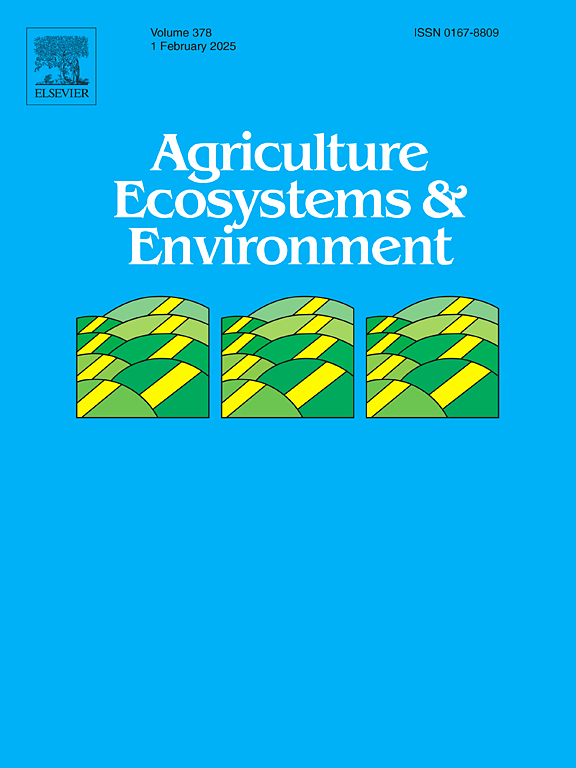Long-term effects of coated fertilizers: Enhancing soil properties, optimizing microbial structures, and boosting soil fertility and crop productivity
IF 6
1区 农林科学
Q1 AGRICULTURE, MULTIDISCIPLINARY
引用次数: 0
Abstract
The widespread application of efficient fertilizers, particularly coated fertilizers, has been recognized as a dual-benefit approach to increasing major crop yields and addressing the global challenge of nitrogen loss. However, existing studies have mainly concerned themselves with how common urea impacts soil properties and the composition of microbial communities, with a limited understanding of the impact of coated urea on these aspects. We carried out an 11-year field experiment to systematically examine how various types of urea affect soil properties, microbial composition, co-occurrence networks, and crop productivity. Polymer-coated urea (CRF) significantly increased yield by 6.8 %–11.2 % over common urea (CCF) during 2021–2023, with its controlled-release mechanism improving soil environmental conditions. Compared to sulfur-coated urea (SCF) and CCF, CRF treatment significantly increased soil organic carbon content in the 0–20 cm layer by 5.1 % and 6.3 % (2021), and in the 20–40 cm layer by 6.2 % and 7.6 % (2022), respectively. The total nitrogen content in the 20–40 cm layer increased significantly by 13.1 % and 25.0 % (2021), and by 17.5 % and 8.0 % (2022), respectively. Compared to other N treatments, the CRF treatment exhibited higher soil pH in two years. CRF treatment significantly enhanced soil aggregate water stable aggregates (WSA),mean weight diameter (MWD) and geometric mean diameter (GMD) (6.3 %–30.8 %) and reduced soil bulk density (2.1 %–9.1 %) in 2021. Differences in network topological features indicated that long-term use of CRF resulted in a sparser and more dispersed symbiotic network, thereby reducing its complexity. The Z-score of module #2 was significantly higher in CRF compared to SCF and CCF, which was associated with an increased relative abundance of plant growth-promoting microbes and populations involved in carbon and nitrogen cycling. Mantel tests and partial least squares path modeling models demonstrated that abundance of network ecological clusters was significantly correlated with soil physicochemical factors and had a significant impact on yield. Overall, CRF significantly enhanced soil fertility, promoted soil sustainability, and increased crop yields by improving soil properties and optimizing microbial communities. These findings enhance our comprehension of how coated fertilizers influence the soil environment and crop growth, offering a robust scientific foundation for optimizing agricultural management strategies and advancing agricultural sustainability.
求助全文
约1分钟内获得全文
求助全文
来源期刊

Agriculture, Ecosystems & Environment
环境科学-环境科学
CiteScore
11.70
自引率
9.10%
发文量
392
审稿时长
26 days
期刊介绍:
Agriculture, Ecosystems and Environment publishes scientific articles dealing with the interface between agroecosystems and the natural environment, specifically how agriculture influences the environment and how changes in that environment impact agroecosystems. Preference is given to papers from experimental and observational research at the field, system or landscape level, from studies that enhance our understanding of processes using data-based biophysical modelling, and papers that bridge scientific disciplines and integrate knowledge. All papers should be placed in an international or wide comparative context.
 求助内容:
求助内容: 应助结果提醒方式:
应助结果提醒方式:


